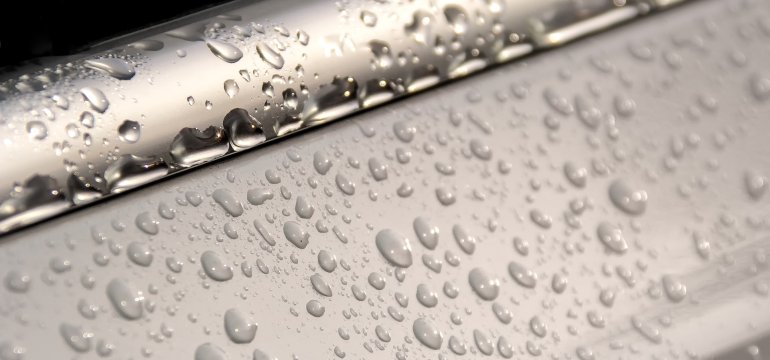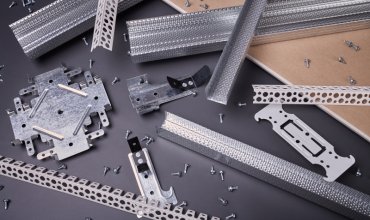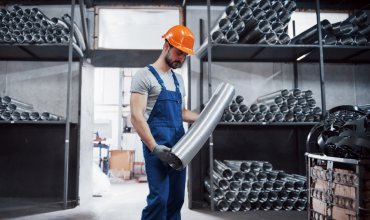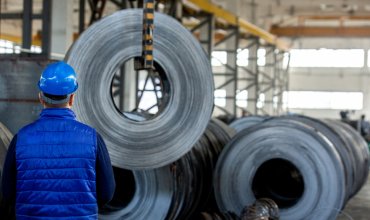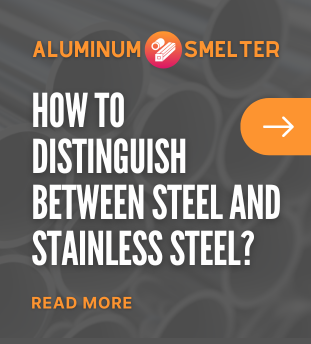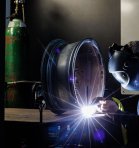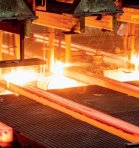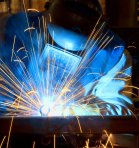Known for its lightness and strength, aluminum is one of the most common metals used in industries ranging from construction to automotive. However, like any metal, aluminum is susceptible to oxidation, leading to tarnish and corrosion that can reduce its durability and aesthetics. Protecting aluminum from oxidation is therefore a key task for engineers, restorers and anyone interested in the long-term preservation of the metal's properties. In the following article, we will discuss the best methods for protecting aluminum, focusing on the situation in Poland and the benefits of using them.
What is aluminum oxidation and why is it problematic?
The process of aluminum oxidation
Oxidation is a basic chemical process in which a metal reacts with oxygen to form oxides on its surface. In the case of aluminum, the oxidation process leads to the formation of an aluminum oxide layer (Al2O3), which is naturally resistant to further corrosion. On the one hand, this layer is beneficial because it forms a protective barrier. On the other hand, under certain conditions it can lead to further corrosion due to the ingress of moisture and contaminants, especially in marine or industrial environments.
Oxidation hazards
Protecting aluminum from oxidation is important to avoid a number of problems that can affect its functionality and appearance:
- Aesthetics: Oxidized aluminum loses its luster and can look dull, which is undesirable in many applications, especially in architecture and decoration.
- Mechanical properties: In extreme cases, oxidation can affect the strength and flexibility of aluminum, which is critical in the automotive and aerospace industries.
- Food: In the food industry, aluminum oxides can affect the safety of products that come into direct contact with the metal.
The best mechanical methods for protecting aluminum from oxidation
Surface polishing and cleaning
Polishing and regular cleaning are the primary mechanical methods for protecting aluminum from oxidation. Frequent removal of dirt and tarnish from the surface of aluminum allows it to maintain its properties for a longer period of time.
Mechanical pol ishing is a process that involves smoothing the surface with abrasive tools, which reduces microscopic pores and cracks where dirt and moisture can accumulate. Regular use of polishing is a common practice in the automotive and aerospace industries in Poland.
Protective layer from anodizing
Anodizing is one of the most common methods used to protect aluminum from oxidation. This process involves the electrochemical formation of an oxide layer on the surface of the metal. This layer is much thicker and more resistant to corrosion than naturally formed aluminum oxide.
In Poland, anodizing is particularly popular in the construction industry because of its effectiveness in improving corrosion resistance and its ability to give aluminum different colors, making it more aesthetically pleasing. Anodized aluminum is also often used in the manufacture of household appliances and electronics, thanks to its added protection against oxidation.
Specialized protective coatings
Another effective method of protecting aluminum from oxidation is the use of specialized protective coatings, such as:
Epoxy coatings: Often used in the marine and chemical industries where exceptional corrosion protection is required. These coatings form a tight barrier that is resistant to chemicals and moisture.
Expert opinions
Engineers specializing in metal protection point out the need for regular inspection and maintenance of protective coatings. As Prof. Jan Kowalski of Warsaw University of Technology points out, "although modern epoxy coatings offer high protection against oxidation, their effectiveness depends on the quality of application and operating conditions."
Chemical methods for protecting aluminum against oxidation
Use of corrosion inhibitors
Corrosion inhibitors are chemicals that, when added to a protective environment, act as a barrier against the oxidation process. The use of inhibitors is common in industries exposed to aggressive environments, such as the marine industry.
In Poland, protecting aluminum from oxidation with corrosion inhibitors is widely used in the shipbuilding industry and during maintenance of port infrastructure. In addition to their functional benefits, corrosion inhibitors are also valued for their ease of application and relatively low cost.
Electroplating
Electroplating is the process of coating the surface of aluminum with a thin layer of metal, usually zinc or nickel, which acts as a protective barrier. The process is particularly effective in protecting against oxidation, especially in industrial settings.
In Polish industry, electroplating is widely used in the production of structural components and tools that are exposed to harsh operating conditions.
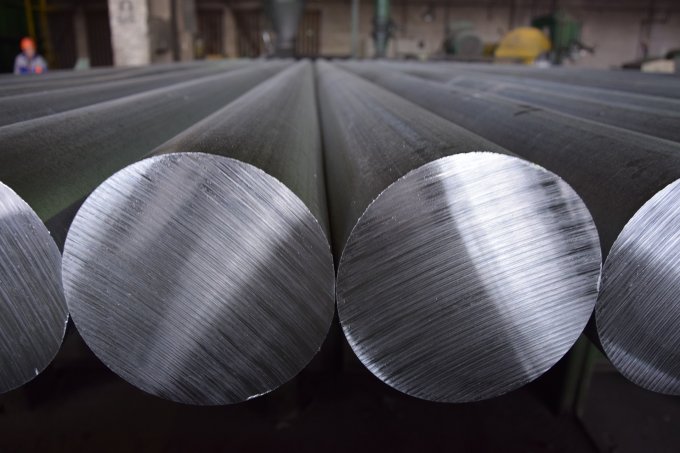
Chemical cleaning and passivation
Chemical cleaning is a method of removing impurities and tarnish from aluminum surfaces using special chemical solutions. Passivation, on the other hand, is the process of creating a thin, passive oxide layer that protects against further oxidation.
As Dr. Maria Nowak of the Polish Chemical Society explains, "passivation is one of the most effective ways to reduce the corrosion process of aluminum, especially in environments exposed to variable weather conditions."
Practical applications and benefits of aluminum protection methods
Automotive industry
In the automotive industry, protecting aluminum from oxidation is crucial to ensure the long life and reliability of vehicles. Polishing, anodizing and the use of specialized coatings keep aluminum components lightweight and strong, resulting in more fuel-efficient cars.
Construction
In the construction sector, aluminum is widely used for its durability and aesthetics. Methods such as anodizing and epoxy coatings are used to protect facades and other structural components, allowing buildings to maintain their aesthetics and functionality over the long term.
Food industry
Aluminum is also commonly used in the food industry for packaging and cookware. Protecting aluminum from oxidation in this case is crucial to ensuring food safety. The use of chemical cleaners and passivation allows high hygienic standards to be maintained.
Innovations and new technologies in aluminum protection
Nanotechnology
Nanotechnology is introducing revolutionary possibilities in protecting aluminum from oxidation. Nanocoatings, which consist of nanometer-sized particles, are extremely effective in creating uniform and super-resistant protective layers. Such technologies are increasingly being deployed in Poland, especially in the high-tech sector.
Smart coatings
Smart coatings are an innovative solution that enables self-repairing surfaces. Using nanoparticles and special polymers, these coatings can automatically repair microcracks and damage, providing long-term protection. Although these technologies are still in development, their potential applications in aluminum protection are promising.
Light builds on research
The use of ultraviolet light to activate special photocatalytic coatings is another new technology in aluminum protection. These coatings can break down organic contaminants and protect against oxidation, making them ideal for outdoor applications.
Summary
Protecting aluminum from oxidation is a key aspect to preserve its mechanical, aesthetic and functional properties. In Poland, the application of various methods of protection, from mechanical to chemical to modern technologies, is a common practice in many industries. Both traditional methods such as anodizing, polishing, chemical cleaners and innovative solutions such as nanotechnology and smart coatings offer countless benefits, ensuring the longevity and reliability of aluminum components. As technology advances, we can expect to see even more advanced and effective protection methods that will revolutionize the way we protect aluminum from oxidation.


